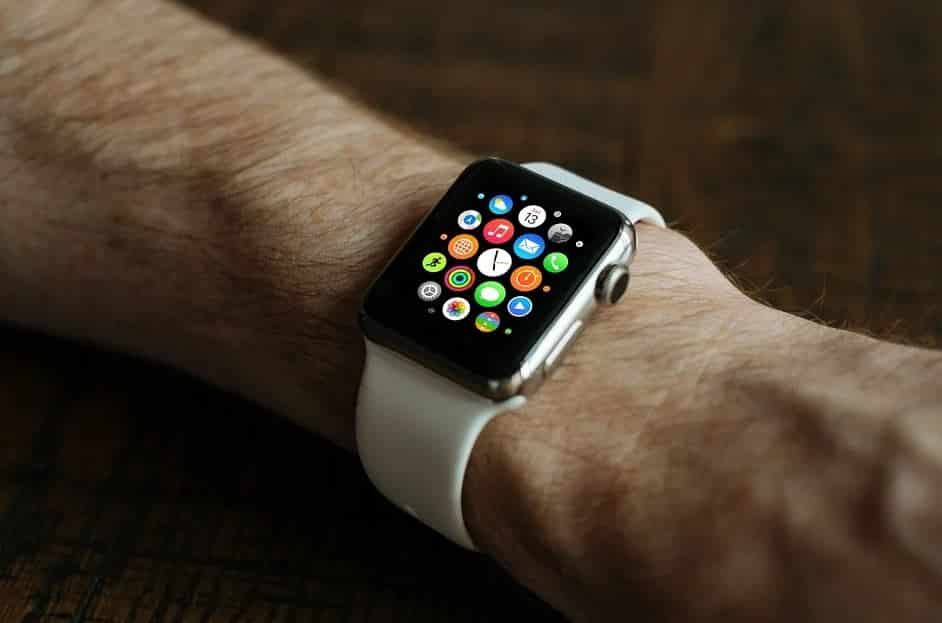Study Finds Smartwatch Data Able to Predict Blood Test Results

Researchers from Stanford University published the results of a study Monday which found smartwatches can signal physiological changes, such as a change in red blood cell count, as well as early signs of dehydration, anemia and illness.
The study is among the first to show that smartwatch data correlates with laboratory test results.
“Physicians’ first reaction is that these are not that accurate, and what they have in the clinic is better, but it’s just not the case. They measure you for 15 minutes, but the wearables measure you from when you wake up first thing in the morning, and it’s a very consistent measurement,” said Michael Snyder, a professor at Stanford University and chair of its genetics program.
Snyder and his colleagues wanted to see whether smartwatch readouts, such as heart rate and physical activity, could show physiological changes that are typically revealed through clinical measurements, including blood tests.
The study followed 54 volunteers who were provided with a smartwatch for a little over three years, tracking their heart rate, step count, skin temperature and electrodermal activity, a measure of electrical activity in the skin that acts as a proxy for sweat production.
The study population consisted of 30 females, and 24 males over the age of 35. Each of them wore a smartwatch for extended amounts of time over the study period, with 343 days being the average.
Throughout the study, each subject made multiple visits to the clinic, where researchers measured six vital signs including heart rate and oral temperature.
The real-time data from the smartwatch was then compared to the clinic visit data to see if smartwatch readouts on heart rate and physical activity could predict clinical measurements in doctors’ offices which measure changes in red blood cell count and hemoglobin, the molecule that carries oxygen.
Heart rate variability and skin temperature were found to be more accurate at early detection for things like whether an individual might develop anemia, as the smartwatches provided real-time 24-7 data regarding changes in a way that clinical data could not.
As an example, Snyder measures his heart rate variability all the time using his wearable and has a consistent average resting heart rate of about 40 beats per minute each morning. However, if his resting heart rate increases by 10 beats a minute, he knows it is likely an indicator of illness.
“We can tell if someone is getting COVID-19 from just 2 beats per minute in elevation of heart rate,” said Snyder.
One of the biggest impacts of smartwatch technology is that heart rate variability has proved effective in detecting illness before symptoms and has shown as a valuable tool for early detection of COVID-19 infection.
“Following someone 24-7, you can see the shifts, and we were able to pick up COVID four days before individuals developed symptoms. About 73 percent of the time, we can tell when people are getting COVID and asymptomatic cases,” said Snyder.
Snyder said heart rate variability is better than temperature at picking up COVID-19 illness, as temperature readings are an old technology which is often not as accurate.
“When you walk up to your place of work and they pull out the infrared sensor when you walk through the door, that is never accurate, because if the weather is cold, it could be a ridiculously low value. It’s a poor measurement the way it is often used, and resting heart rate is much better,” said Snyder.
Wearables like smartwatches have proven to provide early detection for other health issues which traditional clinical methods might have missed. This includes early detection of an irregular heart rate condition called atrial fibrillation, detecting possible heart failure, Lyme disease, respiratory viral infections, type 2 diabetes, and even neurological diseases like epilepsy, especially in young children who are not able to vocalize the possible onset of a seizure.
Snyder said that currently 60% of the planet has a smartphone, and if this was compared with a smartwatch you would have health measurements for 60% of the planet.
He wants everyone to wear a smartwatch and sees opportunities in health care to reduce the cost of these devices, which typically range between $100-$200, for consumers to purchase.
“I would like to see it be a part of any health plan, and as you sign up for a health plan you get a free wearable, these technologies will get cheaper, and can still be less than an antibody test for COVID-19,” said Snyder.
He also finds that devices like smartwatches will be particularly helpful for those living in rural areas with limited access to care, and Snyder is currently launching a study with wearables and Native Americans in rural areas where there are no physician offices, to provide a form of monitoring they wouldn’t have gotten otherwise.
“I don’t see [smartwatches] as replacing tests, they are just valuable to add additional information and make better more of a diagnosis, they can catch diseases early and that’s the key, to catch it before the symptoms,” said Snyder.























